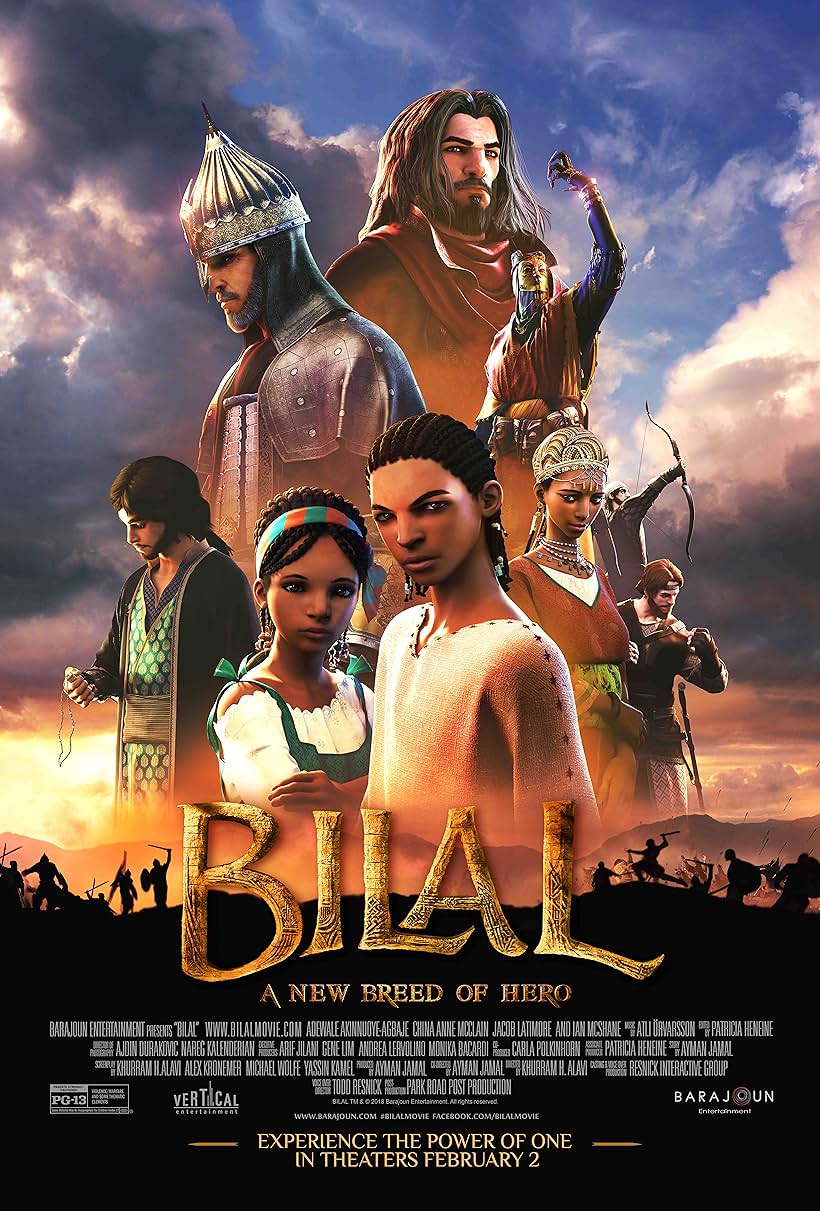“Unveil the Triumph of Equality in Islam: A Powerful Review”
**1. *Bilal’s Childhood and Tragic Loss*
The film opens with young boy of African descent, living with his mother and younger sister, Guevara, in a peaceful village. They live simple lives, and His dreams of becoming a great warrior. His mother instills in him the importance of freedom, honor, and justice.
However, their peaceful life is shattered when their village is raided by slavers. His’s mother is killed, and he and his sister are captured and sold into slavery in Mecca. They are separated from their home and their dreams, now at the mercy of their new masters.

2. Slavery in Mecca
Warrior and Guevara are sold to Umayya, a wealthy and cruel merchant in Mecca. As slaves, He endures immense hardships and physical punishment. However, remains defiant and clings to the values his mother taught him, dreaming of freedom and equality.
During his time as a slave, witnesses the greed and corruption that dominates Mecca’s ruling class. The rich, including Umayya, exploit and oppress the poor and weak, maintaining their power through violence and injustice. Bilal becomes aware of the deep inequality in the city and begins to question the system of slavery.
3. Encounter with Islam and the Message of Equality
As Bilal grows older, he encounters a new message spreading in Mecca — the teachings of Islam. This new religion, preached by Prophet Muhammad (PBUH), promotes monotheism and the revolutionary idea that all humans are equal, regardless of their race or social status.
Bilal is deeply moved by this message of equality and justice. He becomes one of the earliest converts to Islam, embracing the idea that all people are equal in the eyes of God. His conversion angers his master, Umayya, who sees Islam as a threat to his power and wealth.

4. Torture and Perseverance
Bilal’s newfound faith in Islam brings severe punishment. Umayya, determined to force Bilal to renounce Islam, subjects him to brutal torture. In one of the most powerful scenes of the movie, Bilal is tied down under the scorching desert sun with a heavy stone placed on his chest, while Umayya demands he abandon his faith.
Despite the unbearable pain, Bilal refuses to renounce his belief in one God. Instead, he repeatedly declares, “One, One” — asserting the oneness of God. Bilal’s unwavering faith and determination in the face of torture inspire others around him.
5. Liberation and Role in Early Islam
Bilal’s steadfastness in his faith catches the attention of Abu Bakr, a close companion of Prophet Muhammad (PBUH). Abu Bakr, moved by Bilal’s suffering, buys his freedom from Umayya, liberating him from slavery.
Once free, Bilal becomes a devoted follower of Islam and plays a significant role in the early Muslim community. Due to his deep and melodious voice, Prophet Muhammad (PBUH) chooses Bilal to be the first muezzin, the person who calls the faithful to prayer. His powerful voice echoes throughout the city, symbolizing freedom, equality, and justice.
6. Climax and Final Battle
In the film’s climax, Bilal leads a group of oppressed people against the corrupt forces of Mecca, including Umayya. This battle is both literal and symbolic, representing the fight for justice and the end of oppression.
Bilal’s courage and leadership help the Muslim forces emerge victorious, and he confronts Umayya, his former master. Rather than taking revenge, Bilal demonstrates mercy, further embodying the core Islamic values of forgiveness and compassion.

7. Bilal’s Legacy
The film concludes by celebrating Bilal’s lasting legacy as a symbol of freedom, justice, and faith. His life exemplifies how one person, no matter their background or status, can rise above adversity to change the course of history. The final scene highlights Bilal’s iconic call to prayer, which resonates as a message of unity, equality, and strength for generations to come.
Themes:
- Freedom and Equality: The central theme of Bilal is the struggle for freedom and equality, with Bilal representing the oppressed who rise above their circumstances.
- Justice: Bilal’s journey reflects the importance of standing up for justice, even in the face of overwhelming odds.
- Faith and Resilience: The film emphasizes Bilal’s deep faith in Islam and his unwavering belief in one God, which gives him the strength to endure hardships.
Historical Significance:
While the film takes creative liberties, it is based on the true story of Bilal ibn Rabah, a revered figure in Islamic history. His role as the first muezzin and his close companionship with Prophet Muhammad (PBUH) make him one of the most respected figures in the early Islamic community.
Bilal: A New Breed of Hero tells this powerful story in a way that appeals to modern audiences, using animation to bring historical events to life while emphasizing universal themes of justice, equality, and the fight against oppression.
“Learn more about Bilal Ibn Rabah https://en.wikipedia.org/wiki/Bilal:_A_New_Breed_of_Hero
For more inspiring stories of Islamic history, check out More https://reelgems.online/


Beautiful Story